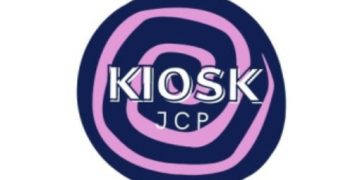Choosing the right higher education loan program is important to help you get the financing you need to pay for college. Many programs can be a great fit for you and your family, so be sure to research your options before you apply.
Federal Perkins Loan Program
Founded in 1992, the Federal Perkins Loan Program was a student loan program aimed at helping students finance their postsecondary education. The program provides low-cost loans to undergraduate and graduate students with exceptional financial need. In addition to the Perkins Loan, the government also offers other types of student financial aid.
The program originated a whopping $1.1 billion in student loans each year. This is enough to cover the costs of more than 500,000 students. The funds are distributed to individual colleges and universities.
Perkins Loans are backed by the government, and borrowers have up to 10 years to repay the loan in full. The size of a Perkins loan depends on the institution, but undergraduate students can borrow no more than $5,500 per year.
The program also has a nine-month grace period, which is a time period during which a student has more time to repay his or her loan. Interest does not accumulate while the student is in school, and the monthly repayment amount is based on the student’s debt.
Direct PLUS Loans
Those in need of Direct PLUS loans can apply for one of several repayment plans. Parents can choose from Standard, Extended, and Graduated Repayment Plans.
Direct PLUS Loans are offered to qualifying parents on behalf of their dependent undergraduate student. The loan can cover the difference between the cost of attending college and the other financial aid that the student receives.
The total cost of attendance is calculated by the Office of Financial Aid. It includes tuition and fees, allowances for books and transportation, and other miscellaneous costs. The borrower may also be eligible to receive money for study abroad, disability, or other related costs.
The amount of a Direct PLUS loan can be as large as needed. Depending on the borrower’s income and other factors, the lender can offer four types of repayment plans.
Michigan Alternative Student Loan (MI-LOAN) Program
Whether you’re a student or parent looking to pay off your college debt, the Michigan Alternative Student Loan (MI-LOAN) Program may be a good choice for you. The program was launched by the State of Michigan to help bridge the gap between traditional financial aid resources and college costs.
The MI-LOAN Program is a private student loan that helps eligible students and parents pay for their education. Last year, the program offered 8,500 loans totaling $68 million.
However, the state of Michigan recently suspended the state-run MI-Loan program and opted instead to provide federally backed loans through the federal government. For instance, federal loans have many benefits, including student loan forgiveness, deferment, and forbearance options.
In addition, the state of Michigan also offers several other programs that can help you pay for school. In particular, there are the Survivor Tuition Grant, the Police Officer’s and Fire Fighter’s Survivor Tuition Act, and the Michigan Tuition Grant.
OS-HELP loans
Those interested in studying overseas can apply for OS-HELP loans. These are offered through a number of tertiary providers. The amount that you can borrow depends on the Higher Education Support Act 2003. In addition to the amount of money you are eligible to receive, the conditions of your loan are also important.
The maximum you can get out of your OS-HELP loan will depend on the year of study and the country you are visiting. For example, the maximum for an Asian student is $7,100 while the maximum for a non-Asian student is $6,470. The amount you can get will depend on the type of study you plan on undertaking and whether you are studying a language.
The minimum time you are allowed to be out of Australia is six months. You must receive written approval from your provider before you leave. This is called a ‘debt confirmation’ form. You can get one at Student Central counter 4 or request a copy to be sent by post.
Consolidating multiple federal and private education loans
Having a single monthly payment can be a big help when you consolidate multiple federal and private education loans. However, it is important to know the pros and cons before you decide on the right consolidation plan. There are many different options available.
Some of the benefits of a consolidation loan include lower interest rates, a longer repayment term, and income-driven repayment. A longer repayment term can decrease your monthly payments, but you may have to pay more in interest. You can also take advantage of a deferment option to temporarily pause your loan payments.
When you apply for a consolidation loan, you will be required to indicate the loans you would like to combine into one loan. The loan servicer will then process the application and notify you of your first payment due date.




















































